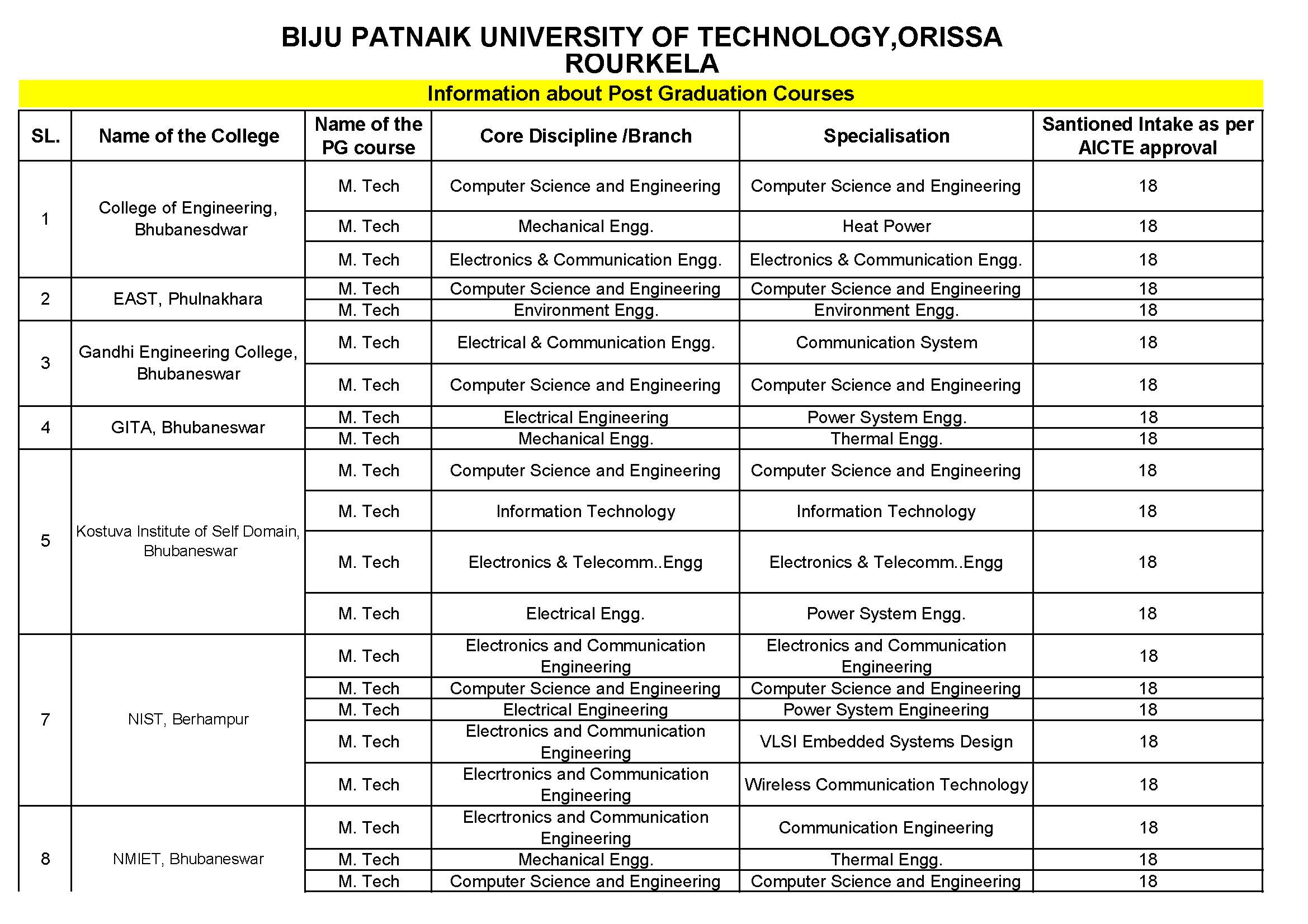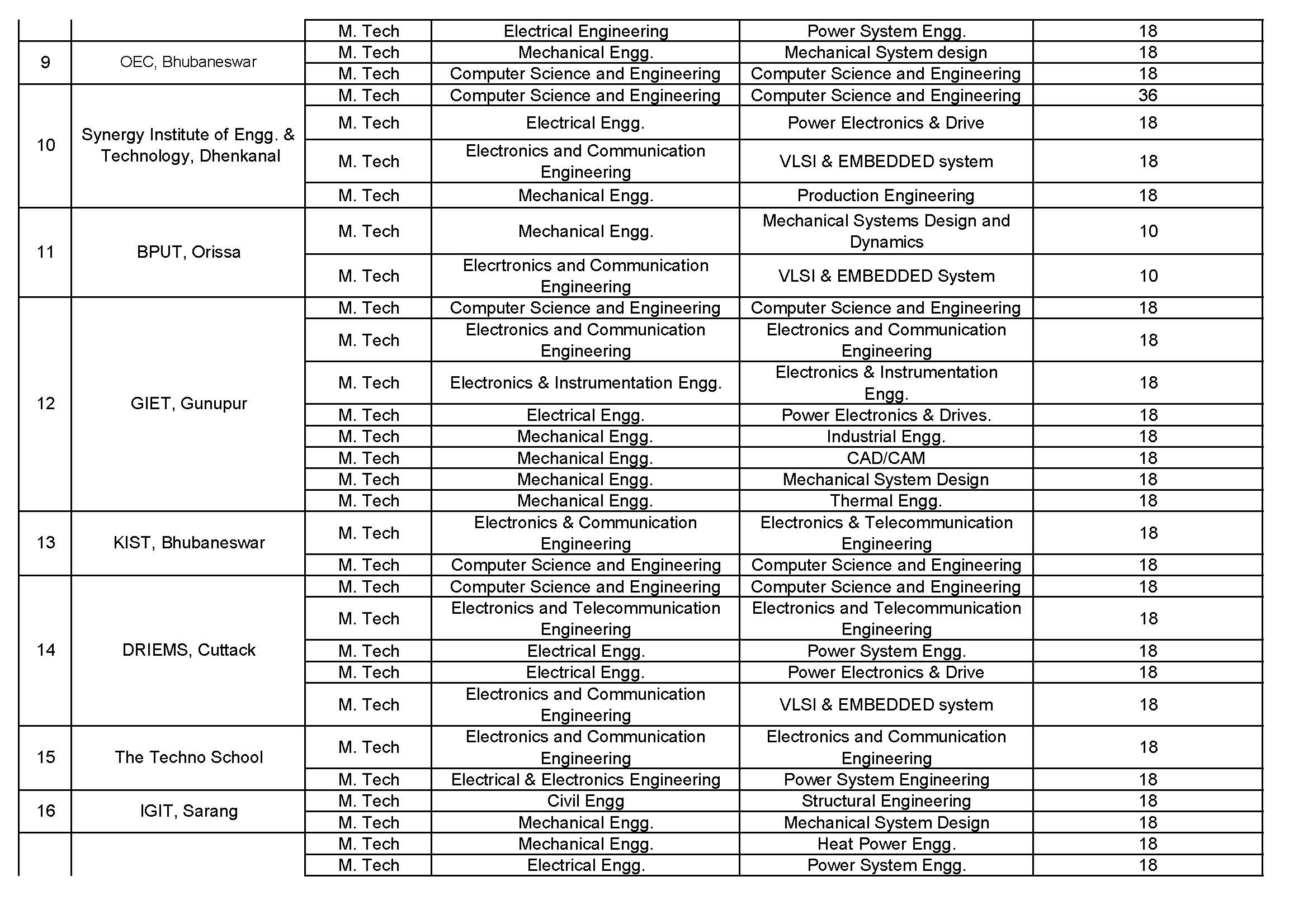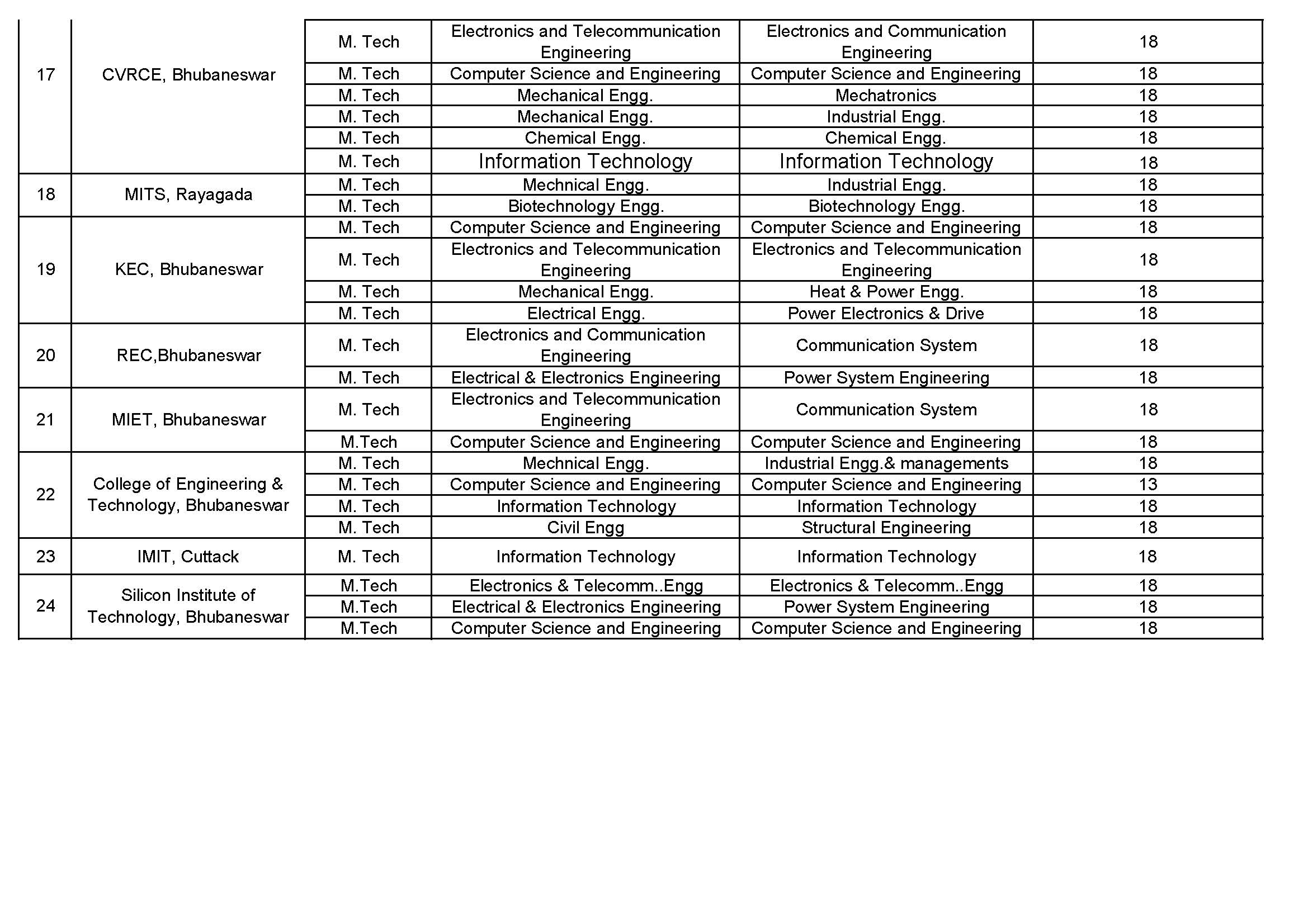Following is obtained from http://odishajee.com/home.asp.



In addition to the above, additional M.Tech seats are available at:
- IIIT Bhubaneswar
- SOA University Bhubaneswar
- KIIT Bhubaneswar
- CIPET Bhubaneswar
- IMMT Bhubaneswar
- OUAT Bhubaneswar
- IIT Kharagpur, Bhubaneswar campus
- VSSUT, Sambalpur
- NIT Rourkela
- SUIIT, Sambalpur
See https://www.orissalinks.com/archives/4984 for seat matrix in the above places.
October 11th, 2010
Today I came across the page http://www.perkinswill.com/work/vedanta-university-medical-precinct-master-plan.html which shows the exact location of the proposed medical college in the campus master plan of Vedanta University.

The overall campus plan is as follows:

October 11th, 2010
Update: The announcement is at http://www.education.nic.in/TechnicalEdu/RevratesPHD.pdf. It looks like the hike is only for Ph.D students and not for M.Tech students.
Following is an excerpt from a report in Hindustan Times.
Research scholars at the Indian Institutes of Technology and all other central science and engineering schools will soon receive a massive hike of up to 33 per cent in the monthly stipend they receive. The human resource development (HRD) ministry has communicated the decision to all central institutions including the IITs.
… Apart from the IITs, students and research scholars at the Indian Institute of Science (IISc), Bangalore, the Indian Institutes of Science Education and Research (IISERs), the National Institutes of Technology (NITs), and the Indian Institutes of Information Technology (IIITs) will also benefit.
The HRD ministry letter to the Directors of these institutions also says the "revision in rate will be applicable to other government and government aided institutions funded by the All India Council for Technical Education and University Grants Commission."
Students who graduate from the undergraduate B.Tech programme at the IITs with a Cumulative Grade Point Average of over 8, and those who clear the Graduate Aptitude Test in Engineering will now receive R16,000 a month during their PG research. They receive R12,000 a month at present.
PG degree holders in the basic sciences and students who have qualified in the National Eligibility Test will get R18,000 a month till their fifth year of PhD research. Students who hold PG degrees in engineering will receive R18,000 a month during the first two years of research and R20,000 a month during the next two years.
October 5th, 2010
Following is an excerpt from a report in Telegraph.
A committee of vice-chancellors has outlined a set of criteria for selecting institutions with the potential for excellence as Navaratna Universities, which will then be given more autonomy and resources.
“The Navaratna Universities would be India’s answer to the Ivy League of the US. These universities will be distinguished ones and will set an example for other institutions in the country,” Seyed Hasnain, the vice-chancellor of the University of Hyderabad, told The Telegraph.
… The suggested criteria include research output, patents, publications, sponsored projects, research grants received, ranking by the National Accreditation and Assessment Council and international agencies, funds, admission procedure, quality of faculty, financial support to students, and the ability to attract foreign students.
The government has asked the committee to submit a final report within two months.
All central and state universities can vie for a place in the Navaratna category, Hasnain said, adding that the group need not necessarily consist of nine institutions.
The universities selected will be provided additional financial support and given the right to hire teachers of their choice, appoint faculty by invitation, set up campuses abroad, hold faculty fairs in foreign countries, engage with institutions of repute for research and generate more resources from sponsored projects.
“The idea is that while setting up more institutions with the aim of achieving international levels, the existing institutions should not be left behind. It is a very good move by the government because the Navaratna institutions will be role models for others,” said Deepak Pental, vice-chancellor of Delhi University.
… Germany has categorised nine universities as Universities of Excellence, China has a similar group of 11 institutions and Australia has its Group-8, made up by the country’s top eight universities.
“This move will create a spirit of competition among institutions to excel. In the process, the quality of education and the standards of institutions will improve,” said Abdul Wahid, vice-chancellor of the Central University of Kashmir.
This is a great idea. The measures should be transparent so that the universities that are left out of it can aim to achieve those measures for future inclusion in that group. I hope some universities from Odisha would make into that list, but even if that does not happen, I think having those measures will enable the Odisha universities to argue for more funding and improving themselves.
See https://www.orissalinks.com/archives/3214 for a ranking of Indian universities based on publication counts. That ranking should give an idea of which universities stand a good chance of achieving Navaratna status.
For the future, there should be a way for additional universities to get Navaratna status. That will encourage the universities that do not get the status in the first round to improve themselves. It will also encourage consolidation and creation of more wholesome universities that have engineering colleges and medical colleges as their components.
October 5th, 2010




